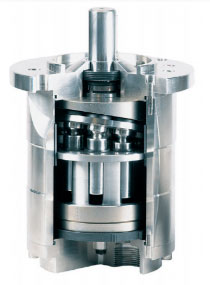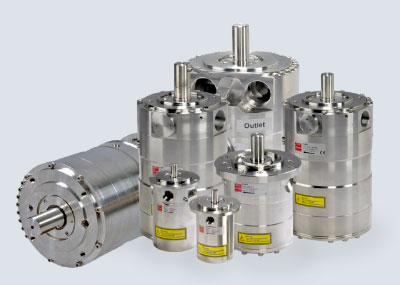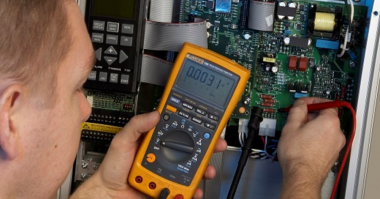Author: Palle Olsen, Application Expert, Danfoss High Pressure Pumps
In recent years, the number of desalination plants has increased dramatically along the coastlines of many continents. And the number of new plants is likely to continue to grow in the coming years as a natural response to the increasing water scarcity facing the world today. In fact, the Global Water Intelligence Association expects an 80 % increase in the number of plants from 2017 to 2020.
According to the UN, more than one billion people suffer from lack of fresh water today, and more than 300 million people in 150 countries rely wholly or partly on desalination of seawater according to the International Desalination Association. The desalinated water resources are vital for supply of drinking water, but equally important for the growing of crops, personal hygiene and sanitation to prevent spreading of life-threatening diseases.
Reverse osmosis has become the prevalent desalination technology
Reverse osmosis has become the preferred technology for desalination. Compared to other methods, Sea Water Reverse Osmosis (SWRO) is highly efficient and provides clean and contamination-free water. The technology is reliable and safe with high-pressure pumps forcing sea water through desalination membranes to create fresh water.
The global focus on CO2 emissions and climate change has led to heavy investments in development of smarter and energy efficient reverse osmosis technologies.
Cutting down energy consumption with positive displacement pumps
For decades, the centrifugal (CF) pump has been considered the best choice of high pressure pump for SWRO. In recent years, however, the increasing focus on energy savings has led to the invention of new and highly efficient pumping solutions. Large-flow Positive Displacement pumps designed specifically for SWRO are entering the market with potential to bring down the energy consumption by 20 % or more compared to CF pumps.
In fact, parallel positive displacement pumps, for instance the APP pumps from Danfoss have been tested to outperform centrifugal pumps even in large plants. The APP pumps are running with proven efficiency rates up to 90%, offering the lowest life-cycle costs in the industry.
Despite the obvious advantages of using positive displacement pumps, some system builders still hesitate to use them for several reasons. In some cases simply because the positive displacement pump is new in large SWRO applications. In other cases, designers are hesitant to use the positive displacement pump because the flow control is different and requires a slightly different design of hydraulic components.
Why Positive Displacement pumps – a simple and reliable pump solution for medium-sized SWRO plants
The flow capacity of a single positive displacement pump is often too low for SWRO applications. Therefore, you need to configure multiple pumps in parallel to achieve the desired capacity. This system design is simple, since the total flow for all pumps can be calculated simply as the sum of the individual pump flow. No capacity is wasted in the parallel configuration.
At the same time, there are obvious advantages of the parallel-coupling of positive displacement pumps. First of all, parallel coupling of positive displacement pumps saves CAPEX as well as energy. This is due to the fact that the regulation of the flow on one pump does not affect the flow on the other pumps, which means that flow regulation needs only be done on one of the pumps. When using VFD to save energy this means that VFD needs only be applied on one of the pumps, while the rest are running directly online.
Having several pumps in the system also increases the uptime of the SWRO system. If one pump is taken out for service or repair, the other pumps remain in service and can provide the required capacity in order to fulfil the demand for fresh water at all times.
Many different applications of Positive Displacement pumps
High-pressure positive displacement pumps like for instance the Danfoss APP pumps can be tailored to any SWRO application, land-based, offshore or marine. The compact size and low weight of the APP pumps allow flexible configuration in almost any environment. Furthermore, the pump is oil-free, using only water for lubrication and thereby eliminating any risk of oil contamination in the sensitive process.
 The simple construction of the APP pump with only few parts allows highly reliable operation with long service intervals and easy maintenance. Their compact footprint and simplified design require no belt drives and can be installed either vertically or horizontally to fit in where space is limited. The pump skids can be pre-assembled and tested at the factory to avoid on-site assembly in remote locations.
The simple construction of the APP pump with only few parts allows highly reliable operation with long service intervals and easy maintenance. Their compact footprint and simplified design require no belt drives and can be installed either vertically or horizontally to fit in where space is limited. The pump skids can be pre-assembled and tested at the factory to avoid on-site assembly in remote locations.
All in all, the APP pump from Danfoss is the most reliable, cost-efficient and sustainable solution for SWRO, bringing fresh water to the increasing number of areas suffering from lack of clean water.
Danfoss APP pumps: Facts and advantages
• Available in sizes from 0.6 m3/h to 86 m3/h for use in
• small/ medium and large-sized SWRO facilities
• Optimized for SWRO applications
• Unrivalled energy efficiency
• Savings on CAPEX and OPEX
• Oil free
• Compact footprint and low weight
• Few parts, reliable operation and easy maintenance
• Can be delivered as pre-assembled pump skids
• Short lead times for fast replacement





